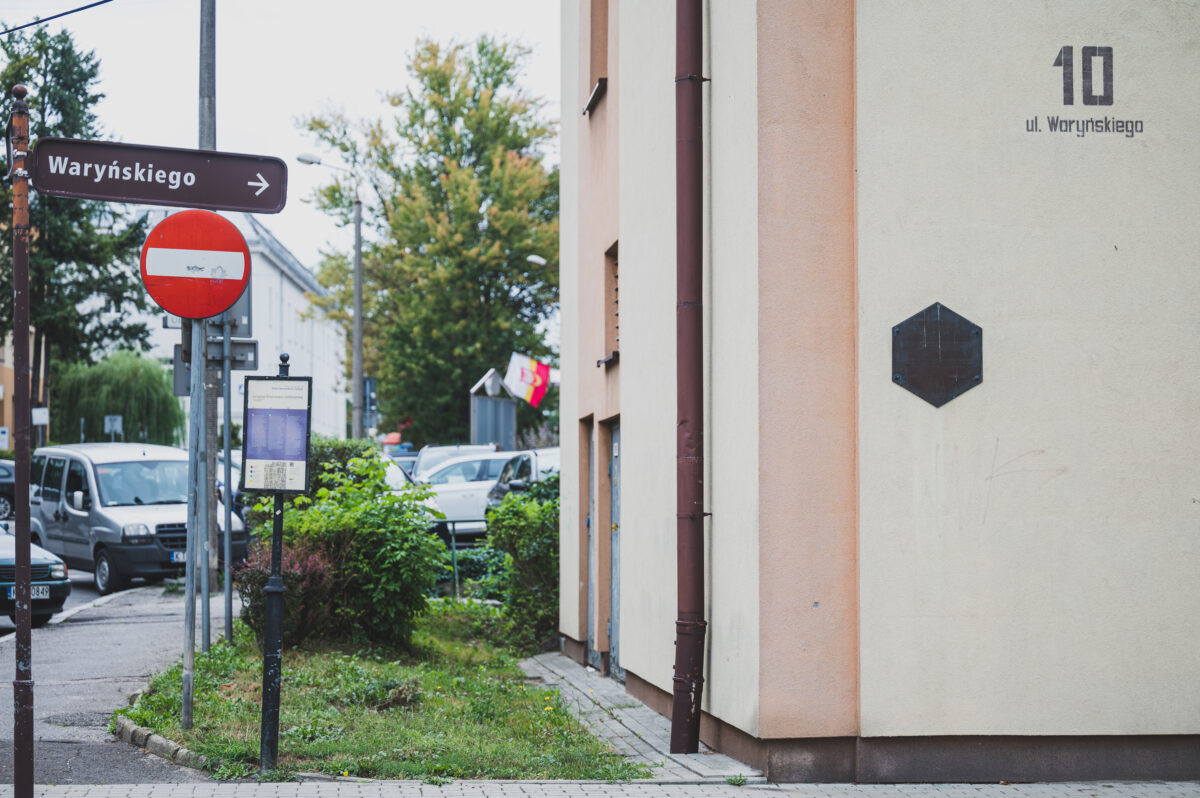We are now looking at a typical residential building, like many built in Poland after the Second World War. When we get closer to its corner, we will see a small plaque. A delicate outline is engraved on this plaque, depicting one of Poland’s most outstanding synagogues. This was the New Synagogue in Tarnów, sometimes called the Jubilee Synagogue. Its site was purchased in 1844, but financial problems delayed the construction work, which took 64 years. In the meantime, the original design by Franciszek Dundaczek was changed and adapted by the famous Krakow architect Władysław Ekielski. The completed synagogue was finally consecrated on 18 August 1908, the birthday of the Emperor of the Austro-Hungarian Monarchy, Franz Joseph I (1830–1916), who reigned for 60 years — from December 1848 until his death. Hence its name: the Jubilee Synagogue. According to a legend, many years earlier some members of the Jewish community planned to name the synagogue after the reigning emperor. Chaim Halberstam from Nowy Sącz, a famous Hasidic leader (tzaddik), founder of the local Hasidic dynasty and one of the most influential members of the orthodox Jewish community in this part of Galicia, heard about it. He was said to have cursed the entire enterprise and for this reason it took so long to complete the construction.
In any case, the Jubilee Synagogue was the pride of the city and its Jewish community. Its characteristic dome has become one of the city’s landmarks. However, it served the residents of Tarnów for only 29 years.
On 9 November 1939, the Germans set it on fire. The fire lasted nearly three days, but it did not affect the structure of the building. So, they planted explosives under it, and destroyed it almost completely.
This is how the eyewitness Gizela Fudem recalls the destruction of the synagogue:
They kept trying with explosives, and they must have been struggling for two days until they finally blew it up, because it was a huge synagogue, with a large dome. I remember that when I was returning from somewhere and the train was approaching Tarnów, from a distance of many, many kilometers I could already see the glow. The dome was covered with copper or something like that, so it shone like gold from the synagogue, which was high, huge and heavy. At first, they planted the explosives there to no avail, and finally when they did blow it up, enormous blocks like this flew around.
Some fragments of the building have survived, and after the war one of them — part of a stone column — was turned into a monument in the Jewish cemetery on the site of a mass grave of those murdered by the Nazis. Thus, the remnants of the Jubilee Synagogue have become a memorial to the victims of genocide committed by the Germans during the Second World War.
